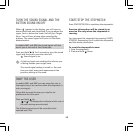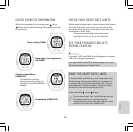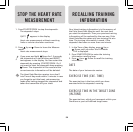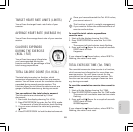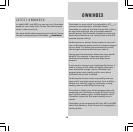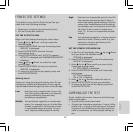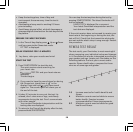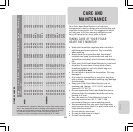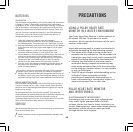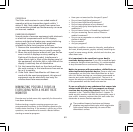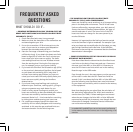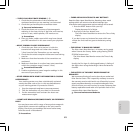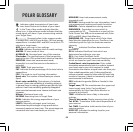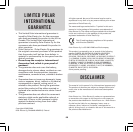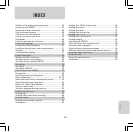
62
FREQUENTLY ASKED
QUESTIONS
WHAT SHOULD I DO IF...
... OWNZONE DETERMINATION ONLY SELDOM GIVES ME
HEART RATE LIMITS WHICH ARE BASED ON HEART RATE
VARIABILITY (OZ.V)?
1. Check that the elastic strap is snug enough.
2. Make sure that the electrodes of the transmitter are
moistened against your skin.
3. Put on the transmitter 15-20 minutes prior to the
start of your exercise to ensure good adaptation
between the electrodes and your skin.
4. Start the first stage of determining your OwnZone
sufficiently slowly. If you obtain the heart rate limits
based on age (OZ.A) within the first 2 minutes you
have raised your heart rate too quickly. The heart
rate reading should not rise over 20 beats/ minute
from the starting level. During the first stage you
can, for example, put on your sports clothing.
5. If you reach the OwnZone limits based on age (OZ.A)
or the previously determined OwnZone limits based
on your heart rate variability (OZ.L) only after 5
minutes from starting specification you have not
raised your heart rate sufficiently rapidly. Raise your
heart rate more quickly during the OwnZone
determination.
6. If you have always used walking and running to
determine your OwnZone, walking uphill, cycling or
using an ergometer may work better for you.
7. Stress or heavy mental loading may reduce your
heart rate variability so that the needed point where
the heart rate variability vanishes cannot be
measured. Relax for 5 - 10 minutes before exercising
by sitting down and decreasing your heart rate.
8. For a small percentage of people the heart rate
variability will not totally disappear with increasing
workload. In this case the age-predicted limits are
the best estimation for the exercising zone.
...THE OWNZONE LIMITS BASED ON HEART RATE
VARIABILITY (OZ.V) VARY CONSIDERABLY?
Heart rate variability reacts sensitively to all changes taking
place in the body and environment. The OZ.V heart rate
limits are affected by, amongst others, your daily state of
fitness, the time of OwnZone determination, the type of
exercise and state of mind. The lower limit of the OZ.V
heart rate limits can change for the same person by as
much as 30 beats.
However it is important that the feeling of exercise carried
out in the OwnZone is light or moderate. For example if you
raise your heart rate too rapidly after the first stage, you may
get too high OwnZone heart rate limits. If the OwnZone
limits seem to be too high we recommend that the OwnZone
determination is done again.
... SOME OTHER PERSON USES MY POLAR M31 OR POLAR
M32 HEART RATE MONITOR?
Polar Heart Rate Monitor determines the OwnZone heart
rate limits on the basis of heart rate and age. If someone
else uses your Polar M31 or Polar M32 it is necessary to
zero the OZ.L heart rate limits which are in the memory.
Reset the age in the USER mode.
Even though the user is the same age as you the age must
still be reset in order that the OZ.L heart rate limits are
zeroed. If this is not done the Polar M31 or Polar M32 may
give the following user OwnZone heart rate limits based
on your heart rate variability which is stored in the memory
of the equipment.
Note that changing the user also affects the calculation of
the total calorie expenditure (Tot. KCAL) and cumulative
exercise time (Tot. TIME). If these readings are not zeroed
when the user changes, the Polar M31 or Polar M32 adds
new exercise periods into its memory, even though the user
information is changed. Cumulative exercise information
can not be returned after resetting.
In models M61 and M62 you can set two users’ preferences
in the memory. Select the correct user in the beginning of an
exercise.



